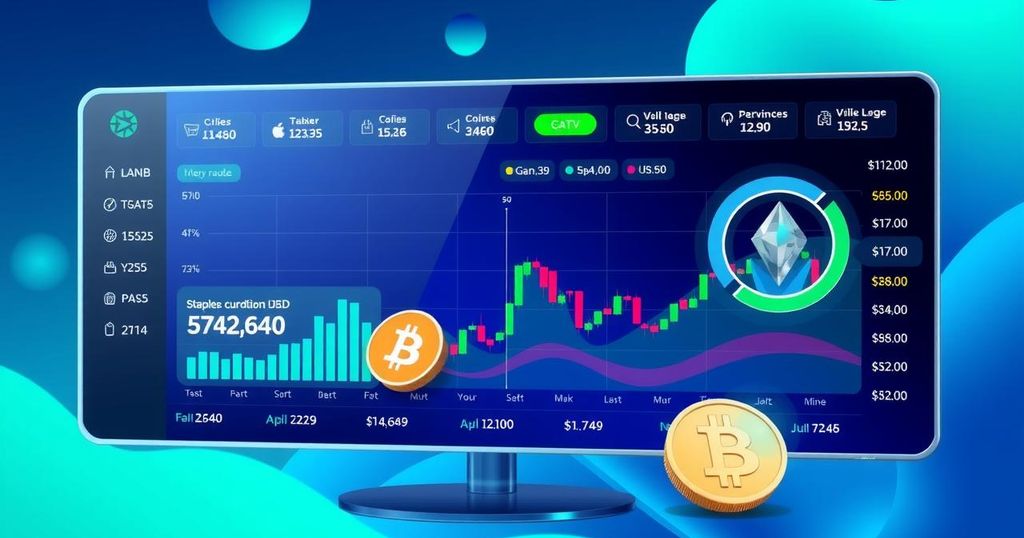Ethereum’s Dencun Upgrade: A Game Changer for Layer-2 Fees
The Dencun upgrade on Ethereum, set for launch on Wednesday, is poised to be the most significant code change in over a year, promising reductions in transaction fees through the implementation of proto-danksharding. This simultaneous improvement of Ethereum’s consensus and execution layers is designed specifically to enhance the efficiency of layer-2 networks, facilitating cheaper transactions and a smoother experience for users. With extensive testing completed, developers are eagerly prepared for this landmark moment in Ethereum’s evolution.
The anticipated Dencun upgrade is set to transform the Ethereum blockchain, initiating on Wednesday and marking the most significant code overhaul in over a year. Named after two earlier projects, Deneb and Cancun, this simultaneous evolution of Ethereum’s consensus and execution layers aims to dramatically reduce transaction costs, especially for layer-2 networks, known as rollups. By integrating the groundbreaking Ethereum Improvement Proposal (EIP) 4844, or proto-danksharding, this hard fork seeks to enhance Ethereum’s capacity to manage data and facilitate faster, cheaper rollup transactions.
This upgrade promises to revolutionize how data is processed on Ethereum, allowing layer-2 networks like Arbitrum, Optimism, and Polygon to post transactions in a more efficient blobspace, alleviating the burden of traditional transaction costs. The shift is expected to lower fees significantly, enabling layer-2s to manage transaction data with greater efficiency, potentially benefiting users as costs decrease. Following months of careful planning and testing, where preliminary bugs were swiftly addressed, Ethereum’s developers are ready for the Dencun launch, with many in the community celebrating this technological progression through livestream watch parties.
Amid these upgrades, Ethereum’s layers have been generating remarkable transaction volumes, with layer-2 networks drastically outperforming the main chain. Currently, these layer-2 platforms process approximately eight times more transactions per second than Ethereum itself. As a result of the Dencun upgrade, layer-2 fees are predicted to decrease sharply—leading to more economical options for users and enhanced scalability for developers across the Ethereum landscape.
Furthermore, as Ethereum gears up for this significant code change, the community is eager to see how the integration of proto-danksharding will reshape data availability and transaction efficiency. Following Dencun, developers will shift their focus to the subsequent upgrade, Electra + Prague (Petra), hinting at even greater enhancements on the horizon for Ethereum’s scalability and user experience, which are tantamount to unleashing a new era for decentralized collaboration.
The Ethereum blockchain, a centerpiece of the digital currency landscape, functions as a decentralized platform for apps and smart contracts. Layer-2 networks have emerged as crucial components that help improve Ethereum’s scalability by bundling multiple transactions for efficient processing. However, high “gas fees” associated with utilizing Ethereum have prompted the need for ongoing upgrades to the protocol. The Dencun upgrade represents a significant step towards achieving lower transaction costs and fostering better performance for applications built on Ethereum, particularly those utilizing layer-2 solutions. Over the past few years, developers have tested and refined the proposed changes extensively, ensuring that they are prepared for this monumental release.
The Dencun upgrade heralds a new chapter for the Ethereum blockchain, offering hope for significant cost reductions and enhanced efficiency for layer-2 networks. By integrating proto-danksharding, Ethereum not only fortifies its capacity against rising transaction fees but also sets the stage for a more collaborative environment among developers and users alike. As this upgrade takes flight, the tech community eagerly anticipates the implications it will have on the Ethereum ecosystem, particularly as further advancements loom on the horizon.
Original Source: www.coindesk.com




Post Comment